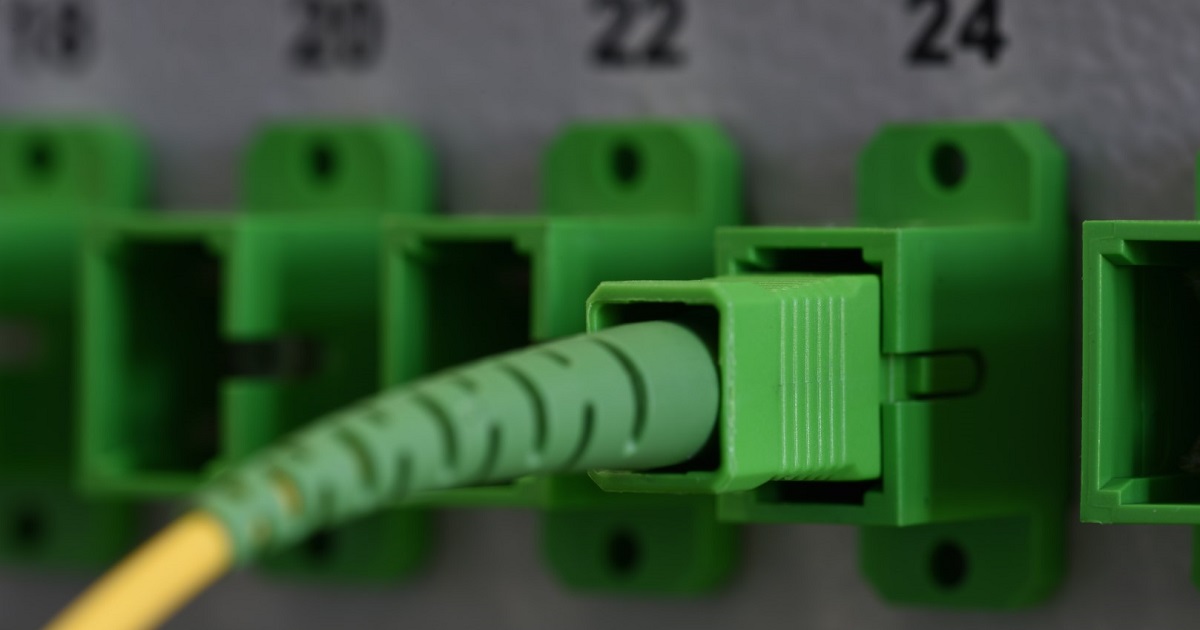
Hyper-Converged Infrastructure
Article | July 13, 2023
Building trust through HCI by unveiling strategies to ensure the long-term reliability of technology partnerships, cementing lasting collaborations in a dynamic business landscape through vendor stability.
Contents
1. Introduction
2. How HCI Overcomes Infrastructural Challenges
3. Evaluation Criteria for Enterprise HCI
3.1. Distributed Storage Layer
3.2. Data Security
3.3. Data Reduction
4. Assessing Vendor Stability: Ensuring Long-Term Reliability of Partners
4.1. Vendor Track Record
4.2. Financial Stability
4.3. Customer Base and References
4.4. Product Roadmap and Innovation
4.5. Support and Maintenance
4.6. Partnerships and Ecosystem
4.7. Industry Recognition and Analyst Reports
4.8. Contracts and SLAs
5. Final Takeaway
1. Introduction
When collaborating with a vendor, it is essential to evaluate their financial stability. This ensures that they are able to fulfil their obligations and deliver the promised services or goods. Prior to making contractual commitments, it is necessary to conduct due diligence to determine a vendor's financial health. This article examines when a vendor's financial viability must be evaluated, why to do so, and how vendor and contract management software can assist businesses.
IT organizations of all sizes face numerous infrastructure difficulties. On one hand, they frequently receive urgent demands from the business to keep their organization agile and proactive while implementing new digital transformation initiatives. They also struggle to keep their budget under control, provide new resources swiftly, and manage the increasing complexity while maintaining a reasonable level of efficiency. For many organizations, a cloud-only IT strategy is not a viable option; as a result, there is a growing interest in hybrid scenarios that offer the best of both realms. By combining cloud and traditional IT infrastructures, there is a real danger of creating silos, going in the incorrect direction, and further complicating the overall infrastructure, thereby introducing inefficiencies.
2. How HCI Overcomes Infrastructural Challenges
Hyper-converged infrastructures (HCI) surpass conventional infrastructures in terms of simplicity and adaptability. HCI enables organizations to conceal the complexity of their IT infrastructure while reaping the benefits of a cloud-like environment. HCI simplifies operations and facilitates the migration of on-premises data and applications to the cloud. HCI is a software-defined solution that abstracts and organizes CPU, memory, networking, and storage devices as resource pools, typically utilizing commodity x86-based hardware and virtualization software. It enables the administrator to rapidly combine and provision these resources as virtual machines and, more recently, as independent storage resources such as network-attached storage (NAS) filers and object stores. Management operations are also simplified, allowing for an increase in infrastructure productivity while reducing the number of operators and system administrators per virtual machine managed.
HCI market and itssolutions can be categorized into three groups:
Enterprise Solutions
They have an extensive feature set, high scalability, core-to-cloud integrations, and tools that extend beyond traditional virtualization platform management and up the application stack.
Small/Medium Enterprise Solutions
Comparable to the previous category, but simplified and more affordable. The emphasis remains on simplifying the IT infrastructure for virtualized environments, with limited core-to-cloud integrations and a limited ecosystem of solutions.
Vertical Solutions
Designed for particular use cases or vertical markets, they are highly competitive in edge-cloud or edge-core deployments, but typically have a limited ecosystem of solutions. These solutions incorporate open-source hypervisors, such as KVM, to provide end-to-end support at lower costs. They are typically not very scalable, but they are efficient from a resource consumption standpoint.
3. Evaluation Criteria for Enterprise HCI
3.1 Distributed Storage Layer
The distributed storage layer provides primary data storage service for virtual machines and is a crucial component of every HCI solution. Depending on the exposed protocol, they are typically presented as a virtual network-attached storage (NAS) or storage area network (SAN) and contain all of the data.
There are three distributed storage layer approaches for HCI:
Virtual storage appliance (VSA): A virtual machine administered by the same hypervisor as the other virtual machines in the node. A VSA is more flexible and can typically support multiple hypervisors, but this method may result in increased latency.
Integrated within the hypervisor or the Operating System (OS): The storage layer is an extension of the hypervisor and does not require the preceding approach's components (VM and guest OS). The tight integration boosts overall performance, enhances workload telemetry, and fully exploits hypervisor characteristics, but the storage layer is not portable.
Specialized storage nodes: The distributed storage layer is comprised of specialized nodes in order to achieve optimal performance consistency and scalability for both internal and external storage consumption. This strategy, which is typically more expensive than the alternatives for lesser configurations, is utilized.
3.2 Data Security
Currently, all vendors offer sophisticated data protection against multiple failures, such as full node, single, and multiple-component issues. Distributed erasure coding safeguards information by balancing performance and data footprint efficiency. This equilibrium is made possible by modern CPUs with sophisticated instruction sets, new hardware such as NVMe and storage-class memory (SCM) devices, and data path optimizations.
In addition, the evolution of storage technologies has played a pivotal role in enhancing data protection strategies. The introduction of high-capacity SSDs (Solid-State Drives) and advancements in storage virtualization have further strengthened the ability to withstand failures and ensure uninterrupted data availability. These technological innovations, combined with the relentless pursuit of redundancy and fault tolerance, have elevated the resilience of modern data storage systems.
Furthermore, for data protection and security, compliance with rules, regulations, and laws is paramount. Governments and regulatory bodies across the globe have established stringent frameworks to safeguard sensitive information and ensure privacy. Adherence to laws such as the General Data Protection Regulation (GDPR) in Europe, the Health Insurance Portability and Accountability Act (HIPAA) in the United States, and various industry-specific regulations is non-negotiable. Organizations must fortify their data against technical vulnerabilities and align their practices with legal requirements to prevent costly fines, legal repercussions, and reputational damage.
3.3 Data Reduction
Optimization of the data footprint is a crucial aspect of hyper-converged infrastructures. Deduplication, compression, and other techniques, such as thin provisioning, can significantly improve capacity utilization in virtualized environments, particularly for Virtual desktop infrastructure (VDI) use cases. Moreover, in order to optimize rack space utilization and achieve server balance, the number of storage devices that can be deployed on a single HCI node is restricted.
4. Assessing Vendor Stability: Ensuring Long-Term Reliability of Partners
Here are some key factors that contribute to ensuring long-term reliability:
4.1 Vendor Track Record
Assessing the vendor's track record and reputation in the industry is crucial. Look for established vendors with a history of delivering reliable products and services. A vendor that has been operating in the market for a significant period of time and has a strong customer base indicates stability.
4.2 Financial Stability
Consider factors such as the vendor's profitability, revenue growth, and ability to invest in research and development. Financial stability ensures the vendor's ability to support their products and services over the long term.
4.3 Customer Base and References
Look at the size and diversity of the vendor's customer base. A large and satisfied customer base indicates that the vendor's solutions have been adopted successfully by organizations. Request references from existing customers to get insights into their experience with the vendor's stability and support.
4.4 Product Roadmap and Innovation
Assess the vendor's product roadmap and commitment to ongoing innovation. A vendor that actively invests in research and development, regularly updates their products, and introduces new features and enhancements demonstrates a long-term commitment to their solution's reliability and advancement.
4.5 Support and Maintenance
Evaluate the vendor's support and maintenance services. Look for comprehensive support offerings, including timely bug fixes, security patches, and firmware updates. Understand the vendor's service-level agreements (SLAs), response times, and availability of technical support to ensure they can address any issues that may arise.
4.6 Partnerships and Ecosystem
Consider the vendor's partnerships and ecosystem. A strong network of partners, including technology alliances and integrations with other industry-leading vendors, can contribute to long-term reliability. Partnerships demonstrate collaboration, interoperability, and a wider ecosystem that enhances the vendor's solution.
4.7 Industry Recognition and Analyst Reports
Assess the vendor's industry recognition and performance in analyst reports. Look for accolades, awards, and positive evaluations from reputable industry analysts. These assessments provide independent validation of the vendor's stability and the reliability of their HCI solution.
4.8 Contracts and SLAs
Review the vendor's contracts, service-level agreements, and warranties carefully. Ensure they provide appropriate guarantees for support, maintenance, and ongoing product updates throughout the expected lifecycle of the HCI solution.
5. Final Takeaway
Evaluating a vendor's financial stability is crucial before entering into contractual commitments to ensure their ability to fulfill obligations. Hyper-converged infrastructure overcomes infrastructural challenges by simplifying operations, enabling cloud-like environments, and facilitating data and application migration. The HCI market offers enterprise, small/medium enterprise, and vertical solutions, each catering to different needs and requirements.
Analysing enterprise HCI solutions requires careful consideration of various criteria. Each approach has its own advantages and considerations related to flexibility, performance, and cost.
The mentioned techniques can significantly reduce the data footprint, particularly in use cases like VDI, while maintaining performance and efficiency. Organizations take decisions that align with their specific storage, security, and efficiency requirements by considering the evaluation criteria for enterprise HCI solutions.
By considering these factors, organizations can make informed decisions and choose a vendor with a strong foundation of reliability, stability, and long-term commitment, ensuring the durability of their HCI infrastructure and minimizing risks associated with vendor instability.
Read More

Hyper-Converged Infrastructure
Article | October 3, 2023
The rollout of 5G networks coupled with edge compute introduces new security concerns for both the network and the enterprise. Security at the edge presents a unique set of security challenges that differ from those faced by traditional data centers. Today new concerns emerge from the combination of distributed architectures and a disaggregated network, creating new challenges for service providers.
Many mission critical applications enabled by 5G connectivity, such as smart factories, are better off hosted at the edge because it's more economical and delivers better Quality of Service (QoS). However, applications must also be secured; communication service providers need to ensure that applications operate in an environment that is both safe and provides isolation. This means that secure designs and protocols are in place to pre-empt threats, avoid incidents and minimize response time when incidents do occur.
As enterprises adopt private 5G networks to drive their Industry 4.0 strategies, these new enterprise 5G trends demand a new approach to security. Companies must find ways to reduce their exposure to cyberattacks that could potentially disrupt mission critical services, compromise industrial assets and threaten the safety of their workforce. Cybersecurity readiness is essential to ensure private network investments are not devalued.
The 5G network architecture, particularly at the edge, introduces new levels of service decomposition now evolving beyond the virtual machine and into the space of orchestrated containers. Such disaggregation requires the operation of a layered technology stack, from the physical infrastructure to resource abstraction, container enablement and orchestration, all of which present attack surfaces which require addressing from a security perspective. So how can CSPs protect their network and services from complex and rapidly growing threats?
Addressing vulnerability points of the network layer by layer
As networks grow and the number of connected nodes at the edge multiply, so do the vulnerability points. The distributed nature of the 5G edge increases vulnerability threats, just by having network infrastructure scattered across tens of thousands of sites. The arrival of the Internet of Things (IoT) further complicates the picture: with a greater number of connected and mobile devices, potentially creating new network bridging connection points, questions around network security have become more relevant.
As the integrity of the physical site cannot be guaranteed in the same way as a supervised data center, additional security measures need to be taken to protect the infrastructure. Transport and application control layers also need to be secured, to enable forms of "isolation" preventing a breach from propagating to other layers and components. Each layer requires specific security measures to ensure overall network security: use of Trusted Platform Modules (TPM) chipsets on motherboards, UEFI Secure OS boot process, secure connections in the control plane and more. These measures all contribute to and are integral part of an end-to-end network security design and strategy.
Open RAN for a more secure solution
The latest developments in open RAN and the collaborative standards-setting process related to open interfaces and supply chain diversification are enhancing the security of 5G networks. This is happening for two reasons. First, traditional networks are built using vendor proprietary technology – a limited number of vendors dominate the telco equipment market and create vendor lock-in for service providers that forces them to also rely on vendors' proprietary security solutions. This in turn prevents the adoption of "best-of-breed" solutions and slows innovation and speed of response, potentially amplifying the impact of a security breach.
Second, open RAN standardization initiatives employ a set of open-source standards-based components. This has a positive effect on security as the design embedded in components is openly visible and understood; vendors can then contribute to such open-source projects where tighter security requirements need to be addressed.
Aside from the inherent security of the open-source components, open RAN defines a number of open interfaces which can be individually assessed in their security aspects. The openness intrinsically present in open RAN means that service components can be seamlessly upgraded or swapped to facilitate the introduction of more stringent security characteristics, or they can simultaneously swiftly address identified vulnerabilities.
Securing network components with AI
Monitoring the status of myriad network components, particularly spotting a security attack taking place among a multitude of cooperating application functions, requires resources that transcend the capabilities of a finite team of human operators. This is where advances in AI technology can help to augment the abilities of operations teams. AI massively scales the ability to monitor any number of KPIs, learn their characteristic behavior and identify anomalies – this makes it the ideal companion in the secure operation of the 5G edge. The self-learning aspect of AI supports not just the identification of known incident patterns but also the ability to learn about new, unknown and unanticipated threats.
Security by design
Security needs to be integral to the design of the network architecture and its services. The adoption of open standards caters to the definition of security best practices in both the design and operation of the new 5G network edge. The analytics capabilities embedded in edge hyperconverged infrastructure components provide the platform on which to build an effective monitoring and troubleshooting toolkit, ensuring the secure operation of the intelligent edge.
Read More

Application Storage, Data Storage
Article | July 12, 2023
StarlingX—the open source edge computing and IoT cloud platform optimized for low-latency and high-performance applications—is available in its 5.0 release today. StarlingX combines Ceph, OpenStack, Kubernetes and more to create a full-featured cloud software stack that provides everything carriers and enterprises need to deploy an edge cloud on a few servers or hundreds of them.
Read More

IT Systems Management
Article | July 19, 2022
The cloud has dispelled many myths and self-made barriers during the past ten years. The utilization of cloud infrastructure keeps proving the innovators right. The cloud has experienced tremendous adoption, leading to the development of our most pervasive - and disorderly - IT infrastructure systems. This move calls for a new level of infrastructure orchestration to manage the complexity of changing hybrid systems.
There are many challenges involved in moving from an on-premises-only architecture to a cloud environment. IT operations teams must manage a considerably more complex overall environment due to this hybrid IT approach. Because of the variable nature of the cloud, IT directors have discovered fast that what worked to manage on-premises infrastructures may not always be applicable.
Utilize Infrastructure as Code Tools to Provide Cloud Infrastructure as a Service
IT has traditionally managed infrastructure orchestration and automation for business tools and platforms. Service orchestration and automation platforms (SOAPs) let non-IT workers turn on and off cloud infrastructure while IT maintains control. End-users are empowered with automated workflows that spin up infrastructure on-demand instead of opening a ticket for every request and waiting on the helpdesk or cloud service team. Automation benefits both end-users and ITOps. Users gain speed, and IT decides which cloud provider and how much cloud infrastructure is used.
Give End Users Access to Code, Low Code, or No Code
Modern SOAP lets citizen automators access workflow automation by preference or competence. SOAPs allow end-users to utilize code or no-code, depending on their preference. SOAPs let end-users access automation through Microsoft Teams, Slack, and ServiceNow. Developers and technical team members can access the platform's scripts and code.
As enterprises outgrow their legacy systems, infrastructure orchestration solutions become essential. Using a service orchestration and automation platform is one way to manage complicated infrastructures. SOAPs are built for hybrid IT environments and will help organizations master multi-cloud and on-premises tools.
Read More